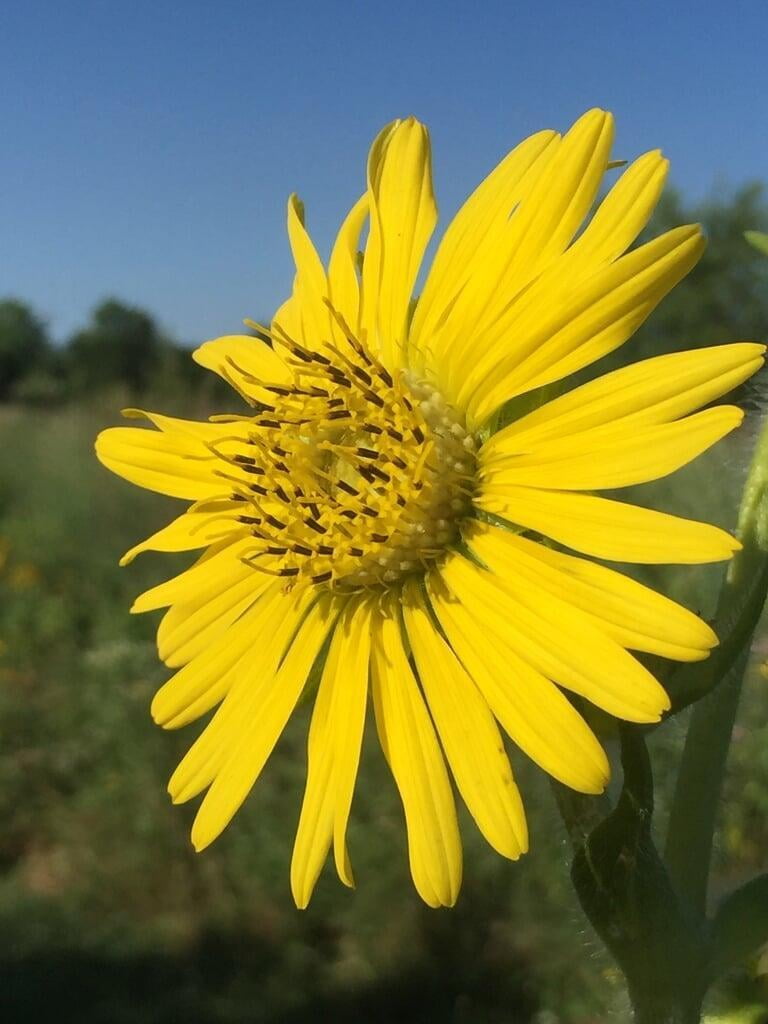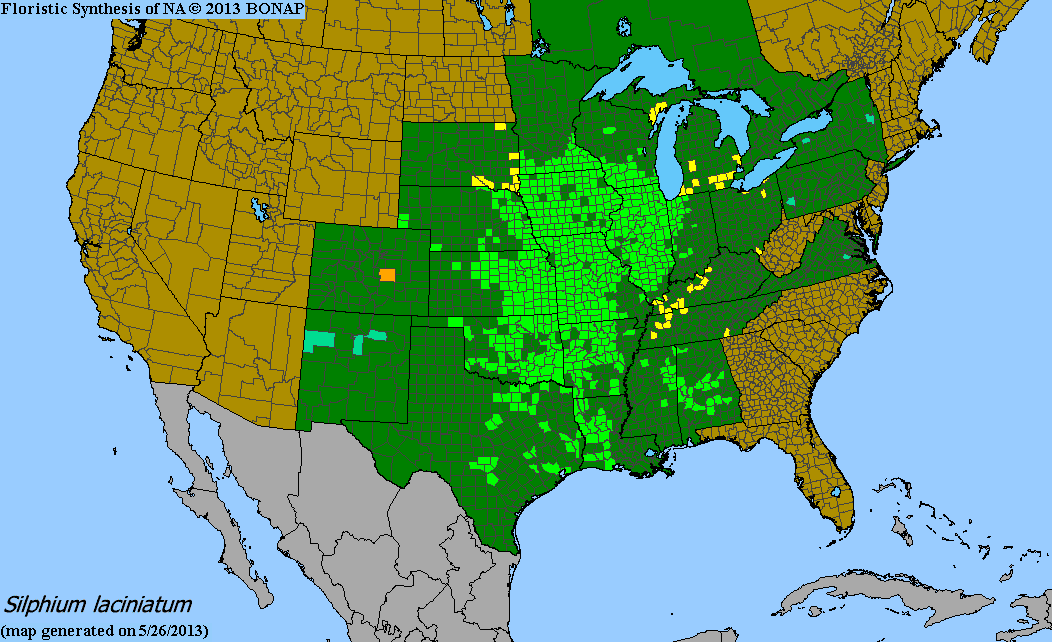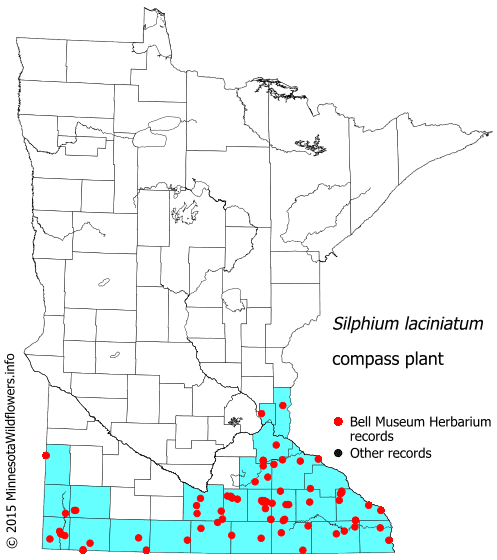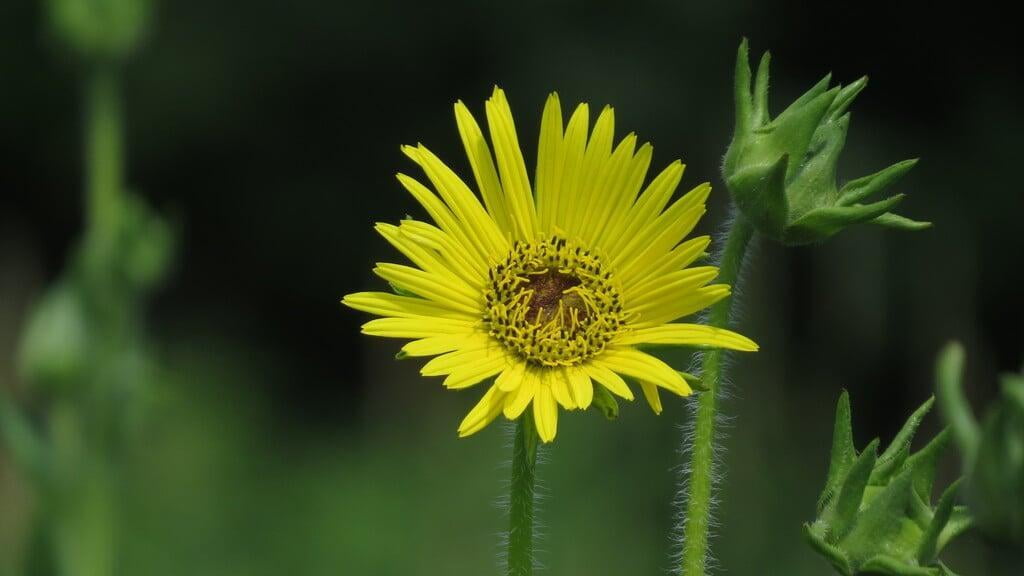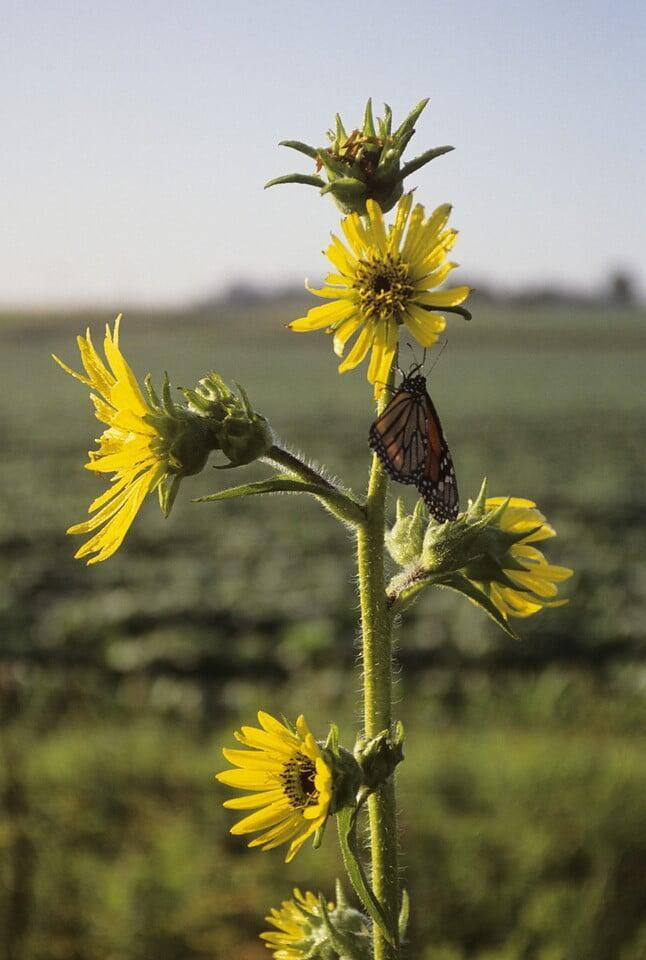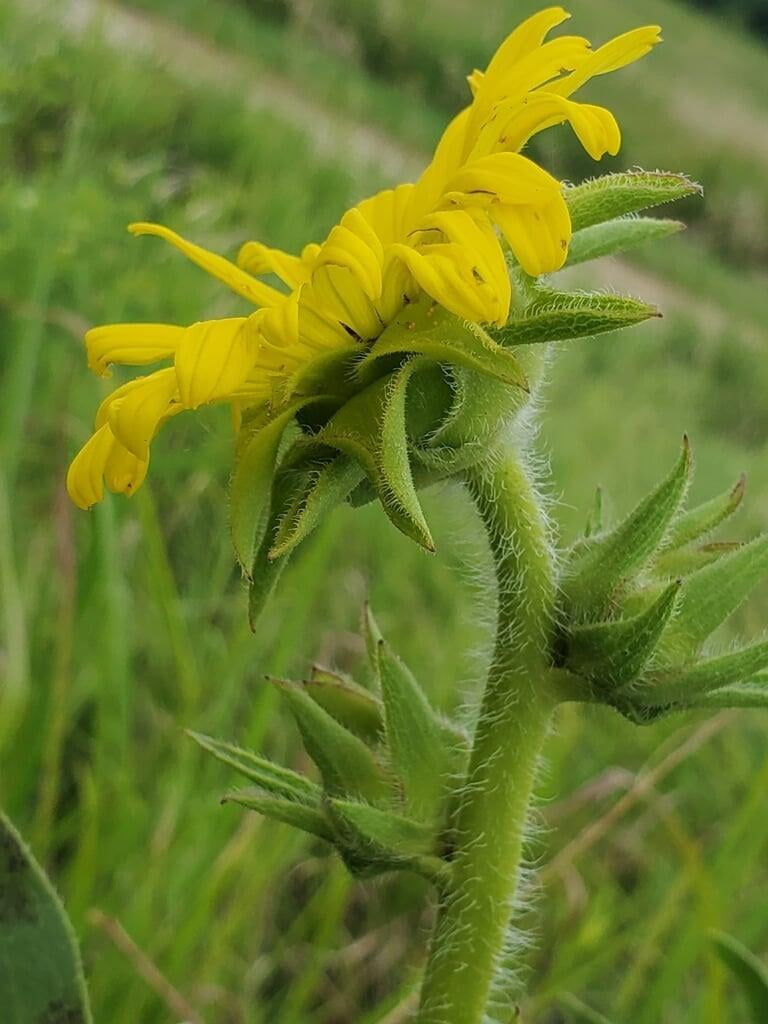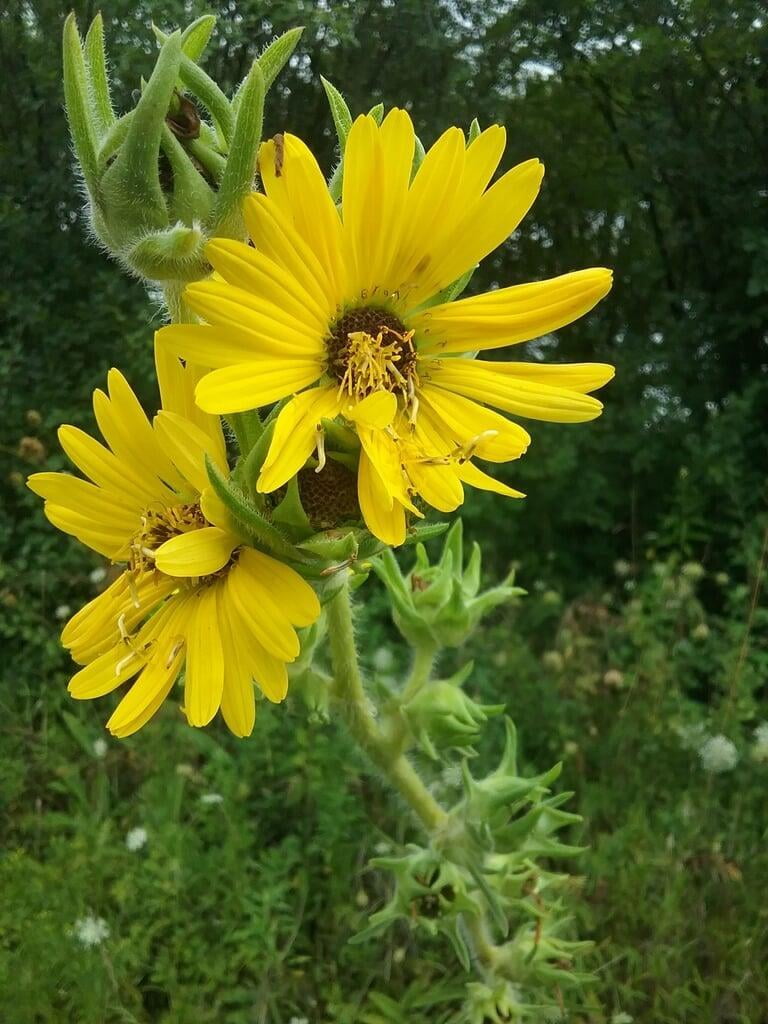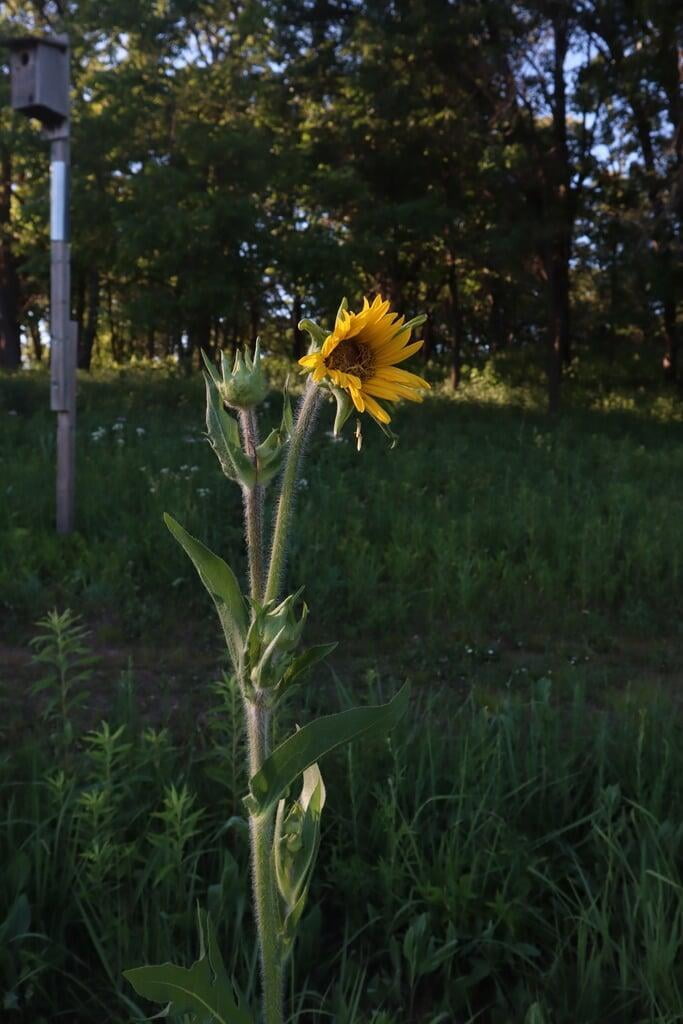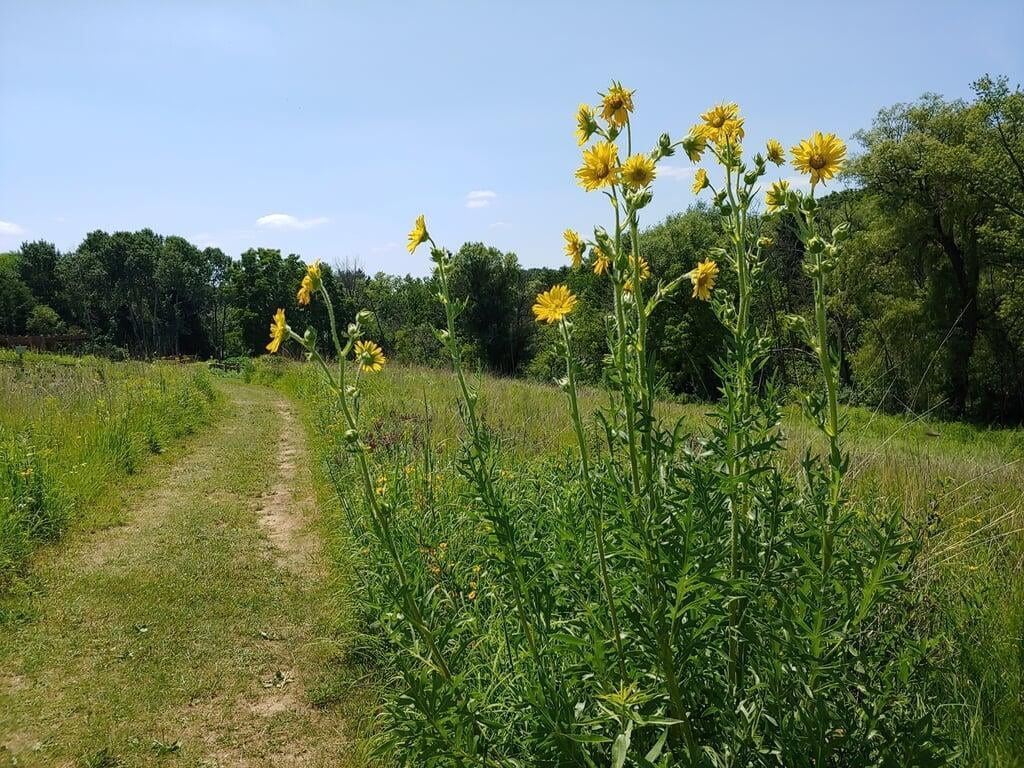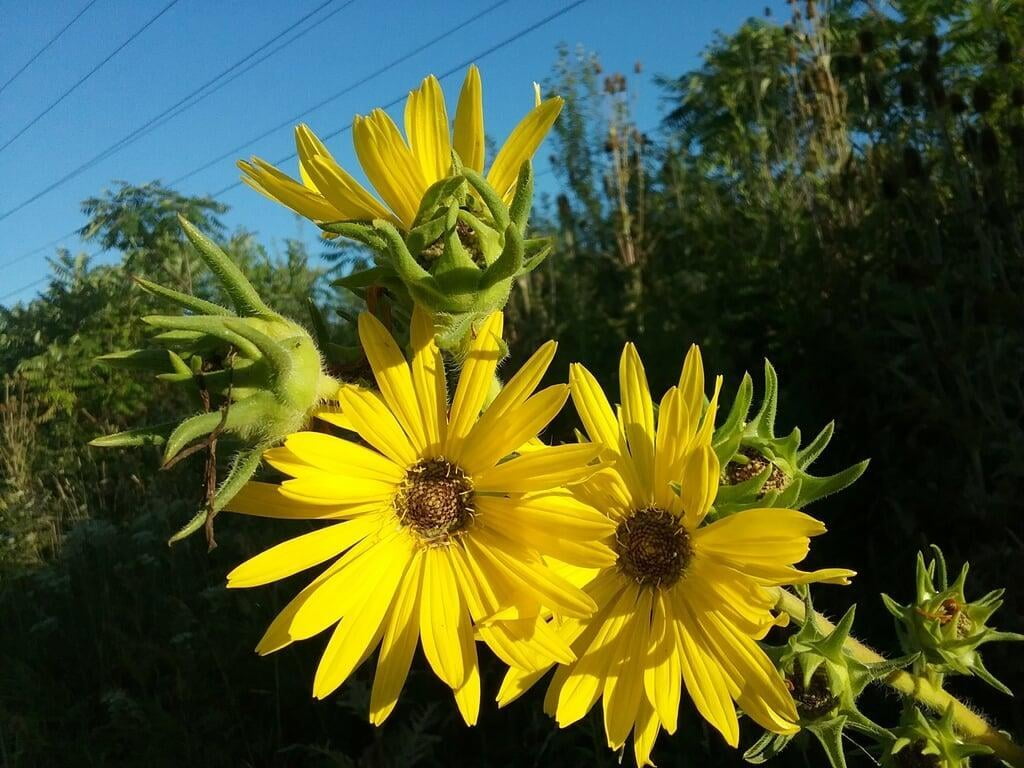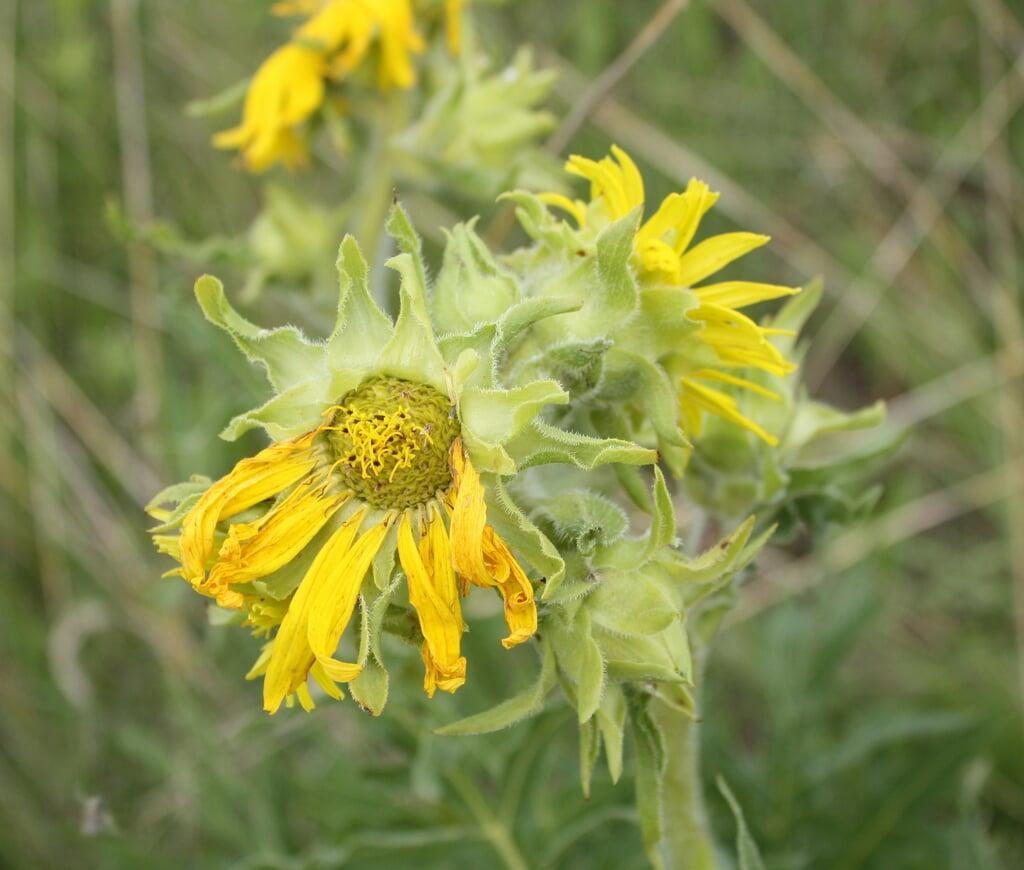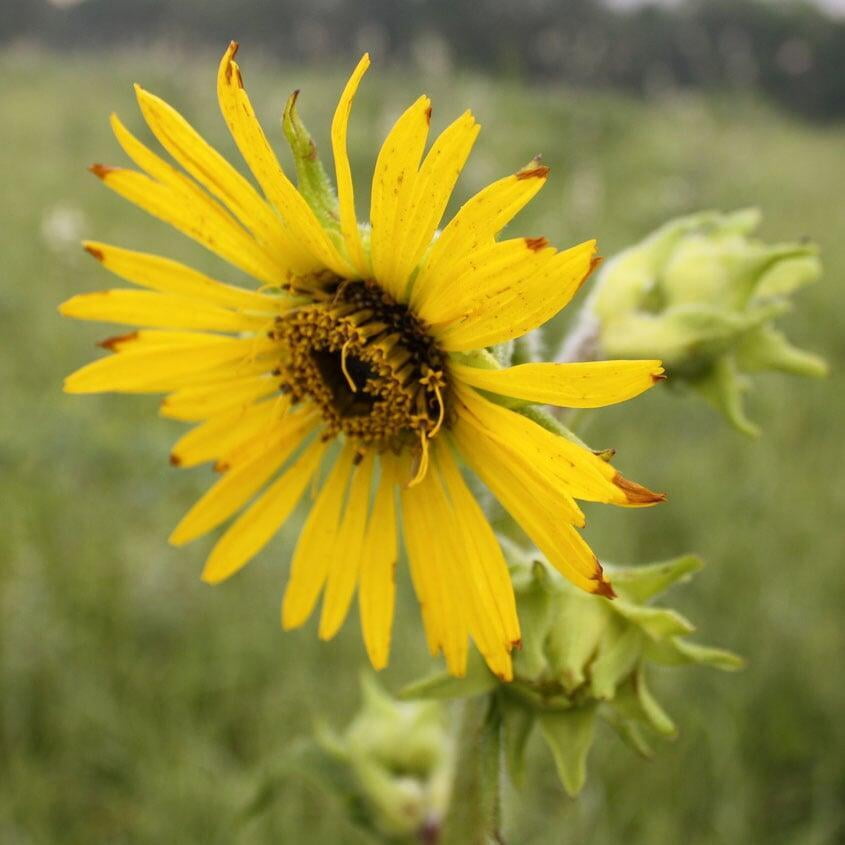Silphium laciniatum
Compass plant Description:
Silphium laciniatum, commonly known as prairie dock or compass plant, is a native prairie plant species that belongs to the sunflower family. It is a tall perennial plant that can grow up to 10 feet in height, and it is usually found in open grasslands, prairies, and savannas throughout much of the central United States. One of the most distinctive features of Silphium laciniatum is its deeply lobed leaves that resemble a compass needle, hence its common name. The leaves can grow up to two feet long and are covered in fine hairs, which help to protect the plant from water loss and herbivores.
Silphium laciniatum is an important plant for both plant conservation and ecology. It has a deep taproot that can grow up to 15 feet deep, which helps to anchor the plant in place and allows it to access water and nutrients from deep within the soil. This makes it an ideal plant for preventing soil erosion and improving soil structure. Additionally, Silphium laciniatum is a valuable source of nectar and pollen for pollinators such as bees, butterflies, and moths, making it an important plant for maintaining healthy ecosystems. Silphium laciniatum also has a long history of medicinal use by Native American tribes for a variety of ailments, including respiratory problems and snakebites. Today, it is still used in herbal medicine as a natural remedy for coughs and colds.
Native Range:
Compass plant is found primarily in the Central United States, from Minnesota south to Texas. In Minnesota, Compass plant has a range that reaches only to the Southern regions of the state.
Standard Plant Information:
Plant Height: 3' - 10'
Bloom Time: July - September
Preferred Habitat: Does well in full sun and dry to average sandy or loamy soil. Often found in prairies, glades, railroads, and roadsides.
Sowing:
For most homeowners, the best option is to scatter seed on the ground by hand broadcasting at a minimum of 16-64 pls ounces per acre. For even coverage, we recommend that you broadcast seed in perpendicular rows across the site to ensure even coverage.
You’ll want to broadcast any grass seed first, which will get raked into the soil lightly. Next, it is ideal to mulch the area lightly with either a clean (no seed) straw or preferably with our native Little Bluestem straw, sold at our retail garden centers. After a light mulching is complete, now it’s time to broadcast your native wildflower seeds, which should not be raked into the soil. A good rain or watering is sufficient to cover the seed.
Planting:
Simply dig a hole in the soil slightly larger than the plant’s roots. Ensure that the soil line of the plant is maintained during the transfer (i.e. the plant should be at the same level with the ground as it was in the pot). Pack any loose dirt back around the plant and make sure you water it well the same day to ensure it has the best chance of survival.

